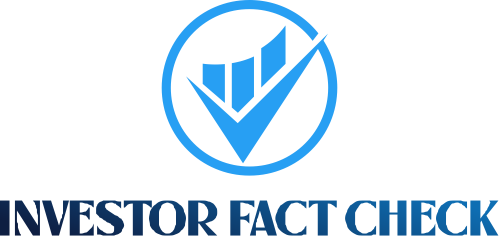Editorial Note: We earn a commission from partner links on Forbes Advisor. Commissions do not affect our editors’ opinions or evaluations.
The rate on a 30-year fixed refinance increased to 6.46% today, according to the Mortgage Research Center. The average rate on a 15-year mortgage refinance is 5.4%. On a 20-year mortgage refinance, the average rate is 6.11%.
Related: Compare Current Refinance Rates
30-Year Refinance Rates Climb 0.61%
At 6.46%, the average rate on a 30-year fixed-rate mortgage refinance is up 0.61% from a week ago.
The 30-year fixed mortgage refi APR (annual percentage rate) is 6.49%. At this time last week, it was 6.45%. The APR represents the all-in cost of your loan.
According to the Forbes Advisor mortgage calculator, homebuyers with a 30-year fixed-rate mortgage refi of $100,000 will pay $629 per month in principal and interest (not accounting for taxes and fees) at today’s interest rate of 6.46%. The total interest paid over the life of the loan would be around $127,213.
20-Year Refinance Rates Climb 0.35%
The 20-year fixed mortgage refinance average rate stands at 6.11%, versus 6.09% last week.
The APR, or annual percentage rate, on a 20-year fixed mortgage is 6.14%. It was 6.12% last week.
At the current interest rate, a 20-year, fixed-rate mortgage refinance of $100,000 would cost $723 per month in principal and interest. That doesn’t include taxes and fees. That borrower would pay roughly $73,901 in total interest over the life of the loan.
15-Year Mortgage Refinance Rates Climb 0.20%
The 15-year fixed mortgage refinance is currently averaging about 5.4%, compared to 5.39% last week.
The APR, or annual percentage rate, on a 15-year fixed mortgage stands at 5.44%.
At the current interest rate, a borrower using a 15-year, fixed-rate mortgage refinance of $100,000 would pay $812 per month in principal and interest. That doesn’t include taxes and fees. That borrower would pay roughly $46,531 in total interest over the 15-year life of the loan.
30-Year Jumbo Refinance Rates Climb 0.12%
The average interest rate for a 30-year, fixed-rate jumbo mortgage refinance (a loan above the federal conforming loan limit of $806,500 in most places) rose week-over-week to 6.76%, unchanged from last week.
At today’s interest rate on a 30-year, fixed-rate jumbo mortgage refinance, a borrower would pay $649 per month in principal and interest on a $100,000 loan.
15-Year Jumbo Refi Rates Climb 1.70%
A 15-year, fixed-rate jumbo mortgage refinance has an average interest rate of 5.87%, up 1.70% from last week.
At today’s rate, a borrower would pay $837 per month in principal and interest per $100,000 borrowed for a 15-year, fixed-rate jumbo refi. Over the life of the loan, that borrower would pay around $50,904 in total interest.
Are Refinance Rates and Mortgage Rates the Same?
No, mortgage refinance rates are typically higher than purchase loan rates due to additional risk for the lender. Cash-out refinance rates are also higher than a standard rate-and-term refinance as you are increasing your loan balance by tapping your equity.
The application process for refinancing a mortgage is similar to getting a home purchase loan regarding the required paperwork and home appraisal. Additionally, similar closing costs from 2% to 6% of the loan amount apply, which is an extra expense.
When you refinance, your new rate is based on current refinance rates and your loan term. This rate replaces your existing mortgage repayment terms.
When considering a mortgage refinance, compare your current interest rate, mortgage balance and loan term with the new interest rate and term. This comparison helps you estimate your new monthly payment and savings, making it easier to determine if refinancing is the right choice.
When Refinancing Makes Sense
There are a number of reasons why you should refinance your home, but many homeowners consider refinancing when they can lower their interest rate, reduce their monthly payments or pay off their home loan sooner. Refinancing also may help you access your home’s equity or eliminate private mortgage insurance (PMI).
A home loan refinance may make sense particularly if you plan to remain in your home for a while. Even if you score a lower interest rate, you need to take the loan costs into consideration. Calculate the break-even point where your savings from a lower interest rate exceed your closing costs by dividing your closing costs by the monthly savings from your new payment.
Our mortgage refinance calculator could help you determine if refinancing is right for you.
How To Qualify for Today’s Best Refinance Rates
Refinancing a mortgage isn’t that different than taking out a mortgage in the first place, and it’s always smart to have a strategy for finding the lowest rate possible. Here are some suggested approaches to get the best rate:
- Polish up your credit score
- Lower your debt-to-income ratio
- Keep an eye on mortgage rates
Having a strong credit score is one of the best things you can do to get approved and get a lower rate. You’re also likely to look better to mortgage refinance lenders if you don’t have too much debt relative to your income. You should keep a regular watch on mortgage rates, which fluctuate often. Also see if you can manage a mortgage payment for a shorter loan term since they usually have lower interest rates.
Best Mortgage Refinance Lenders of 2025
Find the best Mortgage Refinance Lenders for your needs.
Refinance Interest Rate Trends for 2025
National average mortgage rates have remained in the mid-to-high 6% range throughout most of 2025, and experts expect this trend to remain for the rest of the year.
Although forecasting mortgage interest rates is challenging, economic indicators like inflation and unemployment rates can provide insights into the direction of the housing market. For example, if inflation slows and national unemployment levels remain stable or rise, the Federal Reserve may cut the federal funds rate, which could lead to lower mortgage rates. On the other hand, if inflation stays high and unemployment decreases, rates are likely to remain steady.
Since mortgage rates are expected to experience minimal movement during the remainder of the year, those looking to refinance at a lower rate should consider waiting until rates decrease. In the meantime, improving your credit score and making on-time payments will allow you to secure the best possible rate when you begin shopping for refinance offers.
Frequently Asked Questions (FAQs)
How soon can you refinance a mortgage?
Most lenders allow you to refinance a mortgage six months after you start paying it off, although some require that you wait 12 months. Contact your lender to be sure.
How do you find the best refinancing lender?
You should always shop around when you’re trying to get a new mortgage or refinance an existing one. Take a look at the best mortgage refinance lenders as a starting point and try applying online. Always find out the closing costs each lender will charge, and make sure you’re able to communicate well with the lender you want to choose. In a bumpy housing market, you’ll probably be in touch with the lender more often than you realize.
How much does it cost to refinance a mortgage?
It can cost as much as 2% to 6% of the full cost of the loan to refinance a mortgage. Make sure to find out the exact closing costs from your lender.





